[This article was first published on carbuyer.com.sg]
Facelifted Stinger still delivers an authentic driving experience and more, and while it’s more expensive now it’s still offers a German driving experience for a less-than-German price in Singapore
SINGAPORE
If you don’t know what a Kia Stinger is we’ll lift the rock and tell you right here in our review of the car at its 2018 debut in Singapore, as well as the story of how it was developed on the Nurburgring by BMW M’s ex-head of engineering.
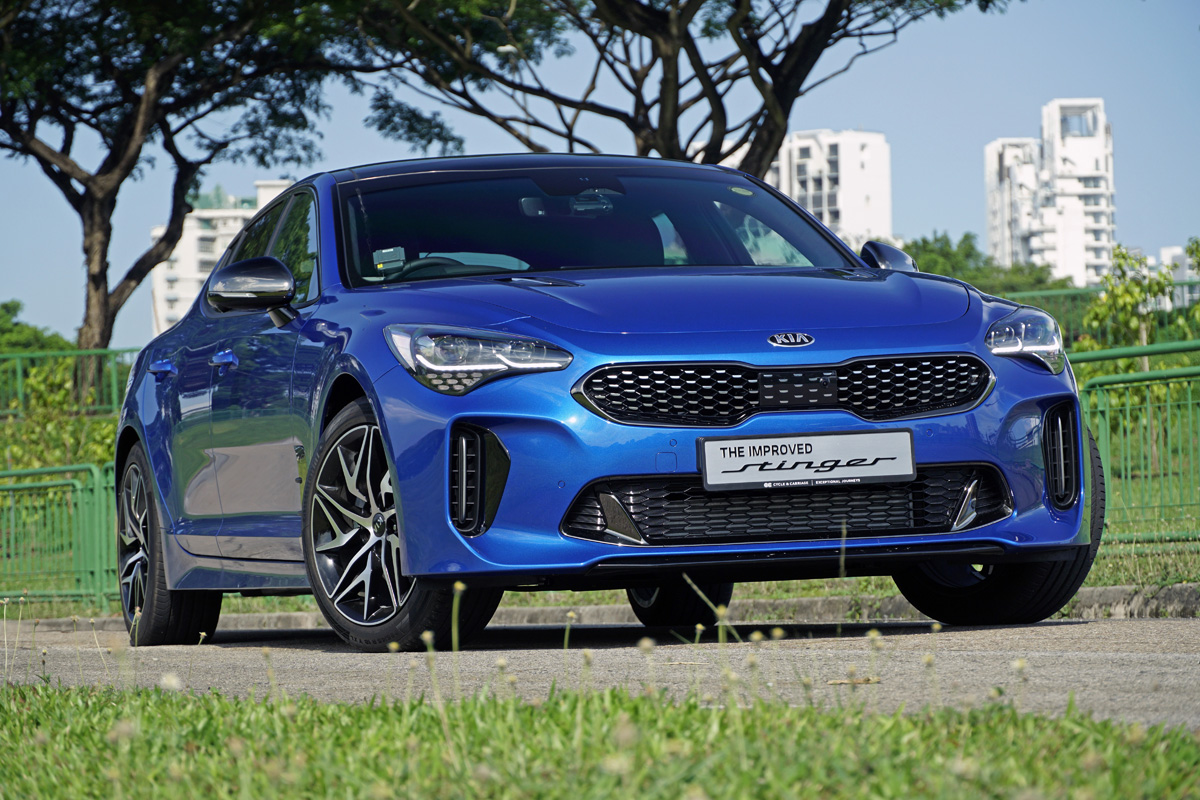
In a snail shell, the Stinger is a German car in Korean clothes. The five-door fastback grand tourer is a sedan-shaped car with a hatchback, and it’s bigger than a BMW 3 Series but smaller than a BMW 5 Series.
As we reported in our news story, this is the facelifted model that introduces cosmetic tweaks and some quality-of-life improvements on the inside of the car.
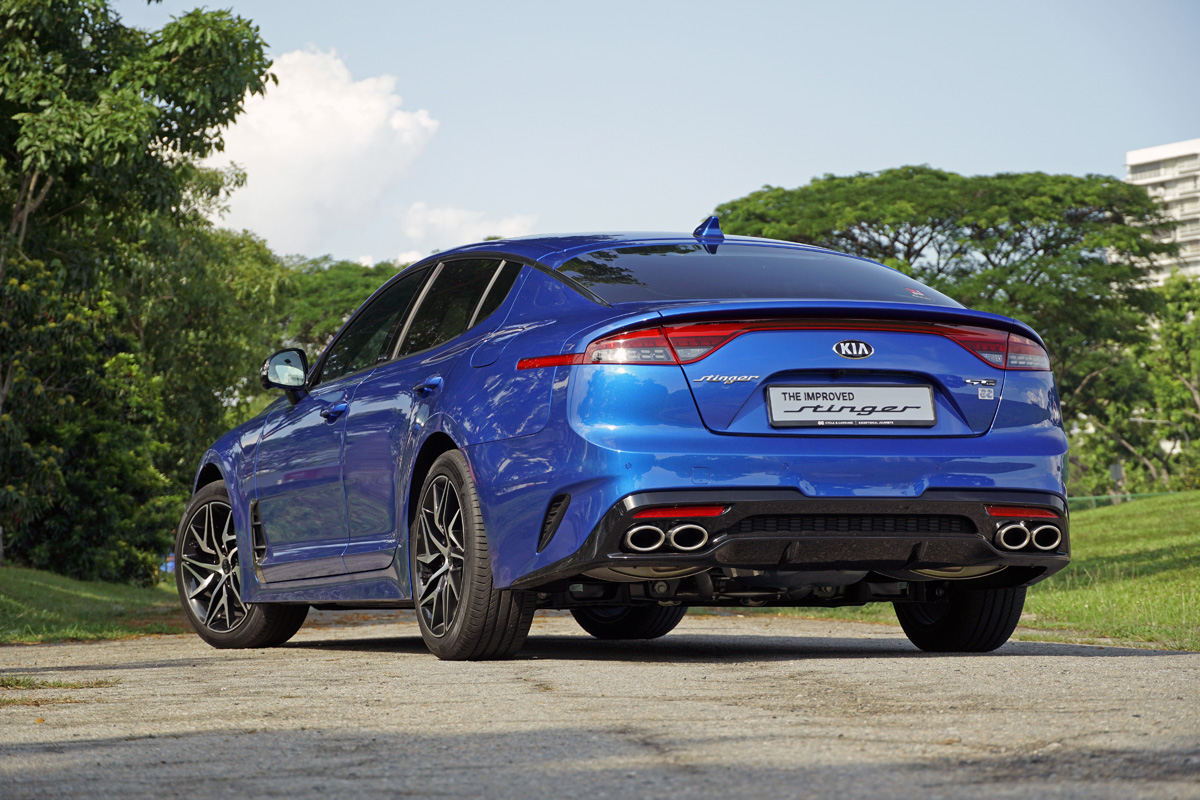
In the metal, the new Stinger is still a handsome car thanks to its low, wide stance and muscular proportions. The car’s face isn’t hugely different with a wide Tiger grille and toothy lower section. The headlights have been changed, with a new daytime running light signature and dynamic turn signals.
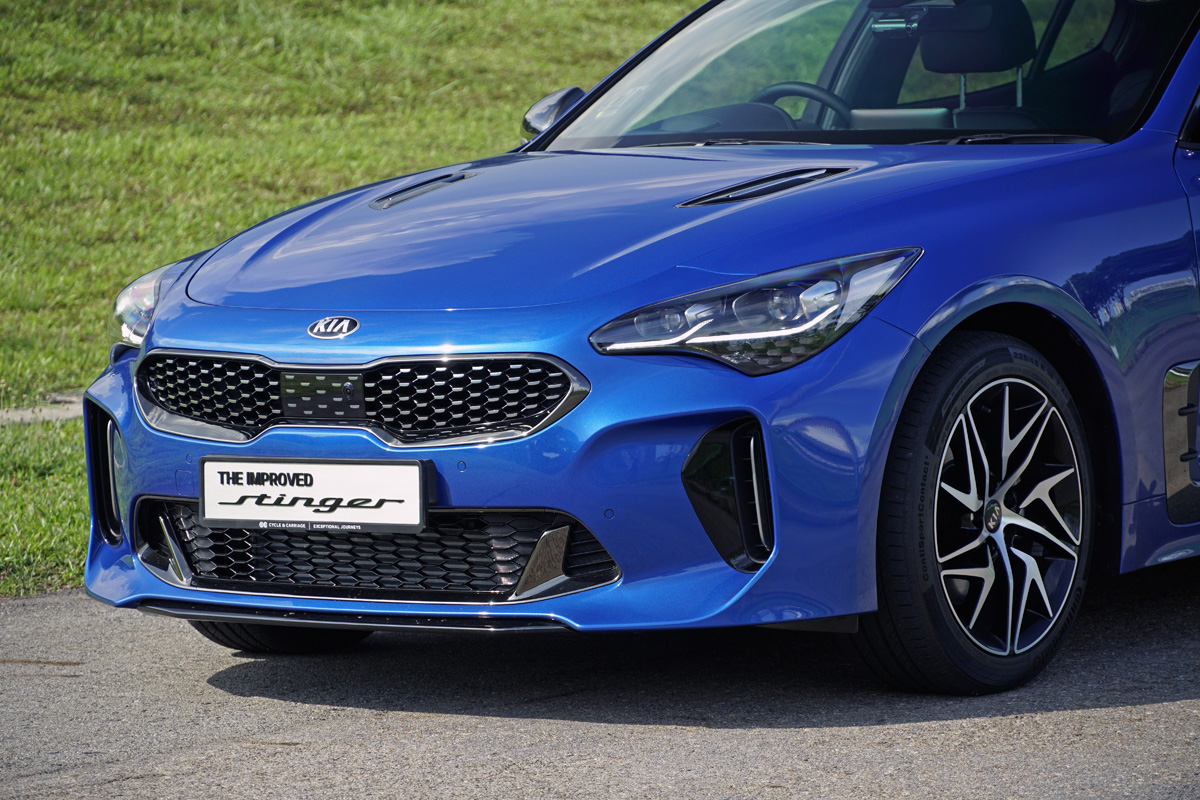
The most obvious mutation is that the taillights are now a single segment connected by an oh-so-fashionable lightbar. Perhaps most important is that it’s ample proof of Kia’s design confidence now, since it never obviously cribs from the Germans which have so inspired it.
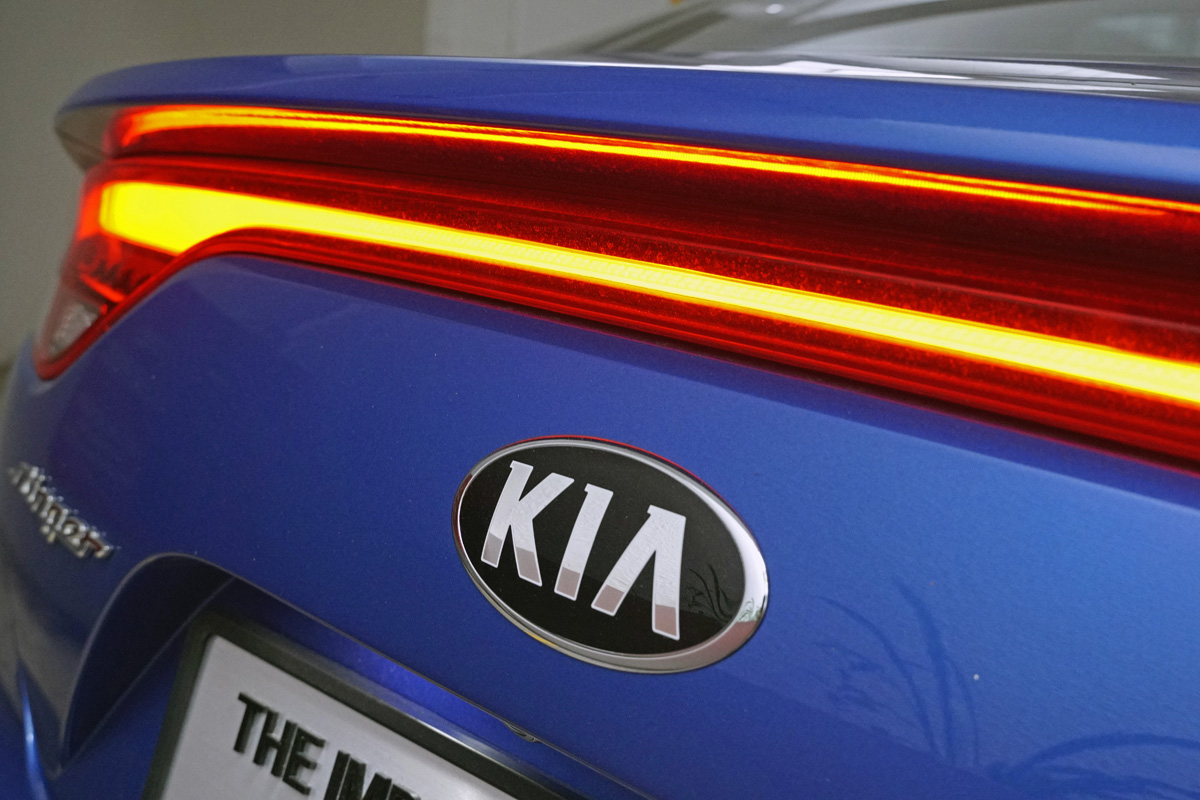
Business is almost as usual on the inside too, unless you know what you’re looking for. The driver-centric cockpit layout presages an exciting place to spend the time, and it’s held up very well in 2021 though it isn’t doesn’t have as much wow as it did in 2018 because of mainstream brands raising the bar – Mazda’s CX-30 for instance, and Kia itself in the Sorento.
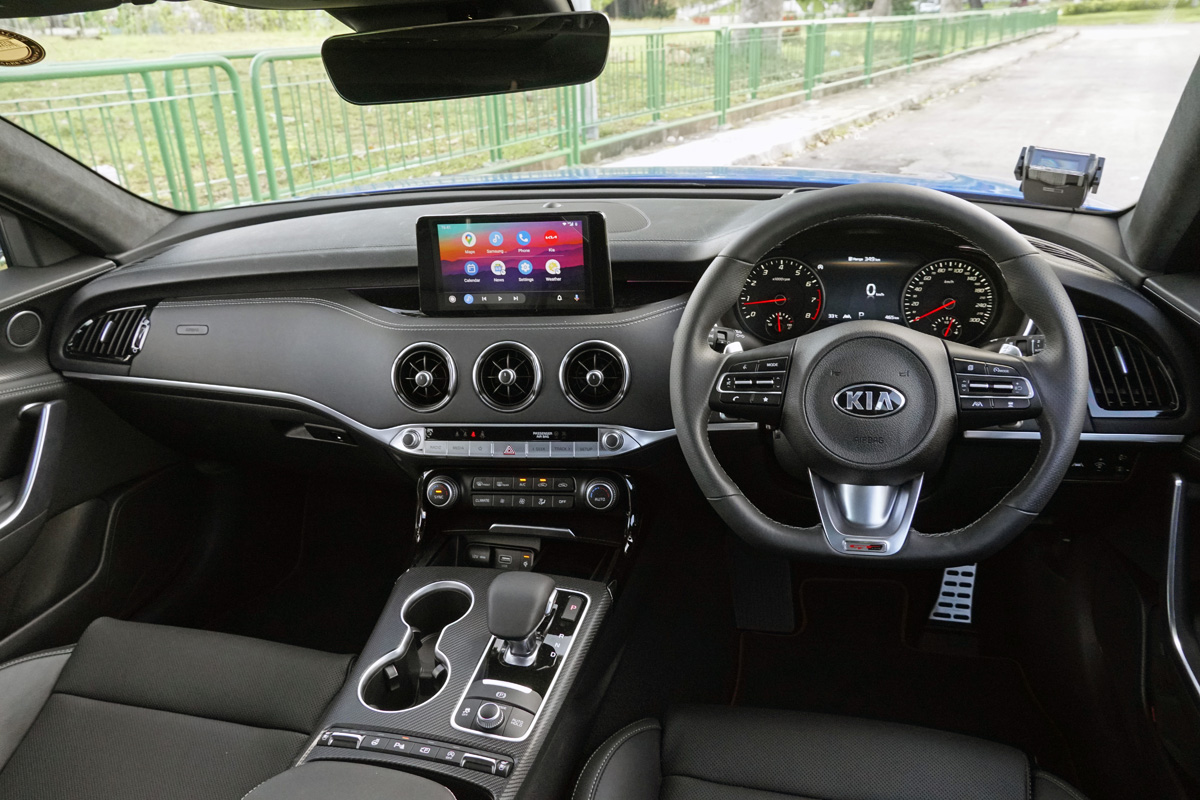
Nice touches include leather on the central dash and doors, along with great feeling switchgear, and it’s clear this isn’t an everyday Kia, though the central steering wheel section is the same soft-ish plastic as on a Seltos or Niro. The comfy, bolstered sport seats are still both electrically-adjustable though, and come with heating/cooling.
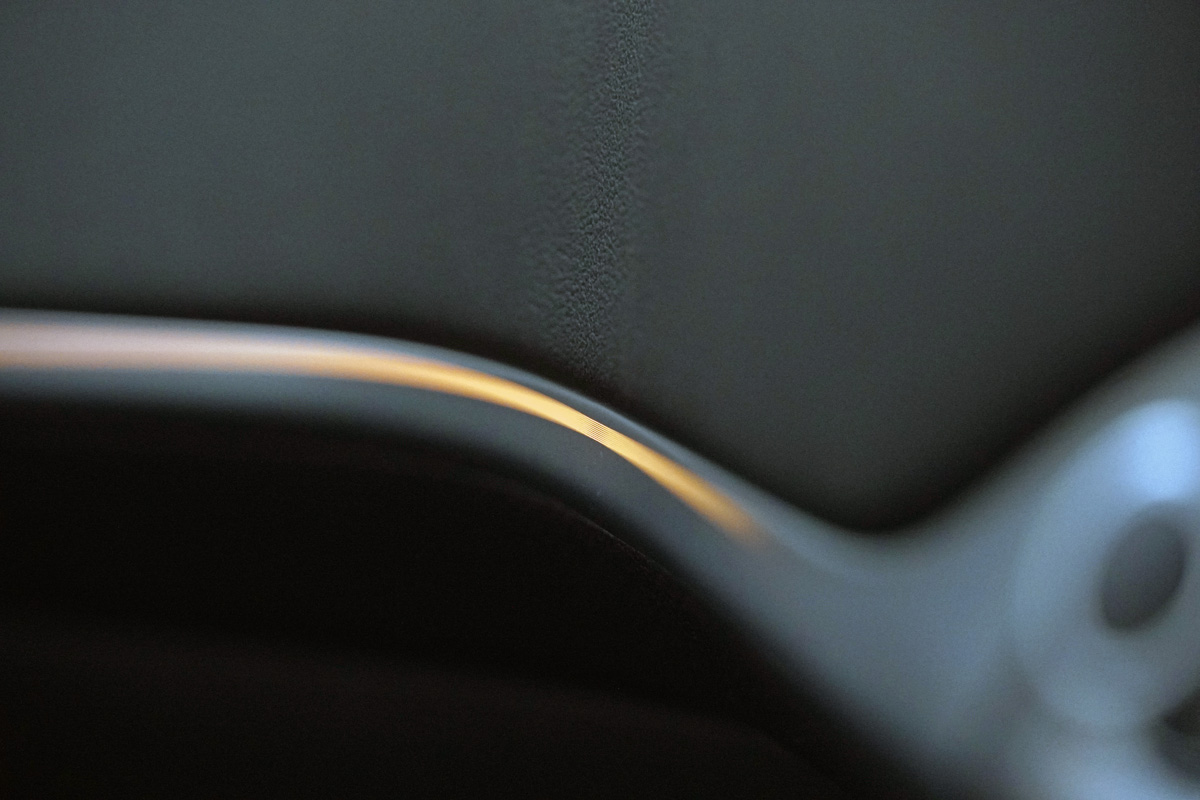 Ambient lighting has also been improved
Ambient lighting has also been improved
The central infotainment touchscreen screen is bumped up an inch, to 8.0-inches, though it looks identical otherwise, and is relatively easy to use.
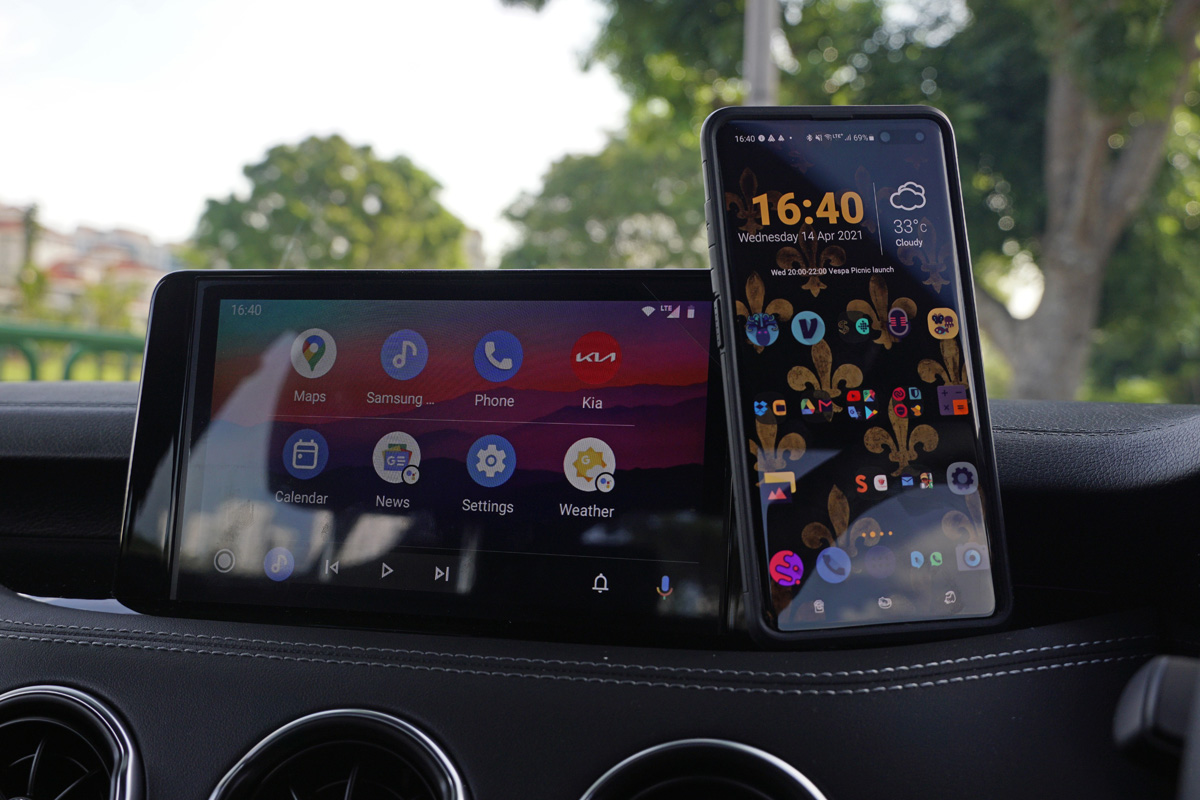 Look Ma, no wires! Wireless Android Auto is a first in the mainstream segment.
Look Ma, no wires! Wireless Android Auto is a first in the mainstream segment.
One major feather in Kia’s cap is that the Stinger is the first non-BMW car (BMW introduced the feature earlier this year via its in-car over-the-air updates) to have wireless Android Auto and wireless Apple CarPlay, which is very useful in conjunction with the wireless device charger. It’s a big bonus because now you don’t need a wire poking out everywhere, and you can use Google Assistant or Siri which are far easier to use than any in-car voice control systems around.
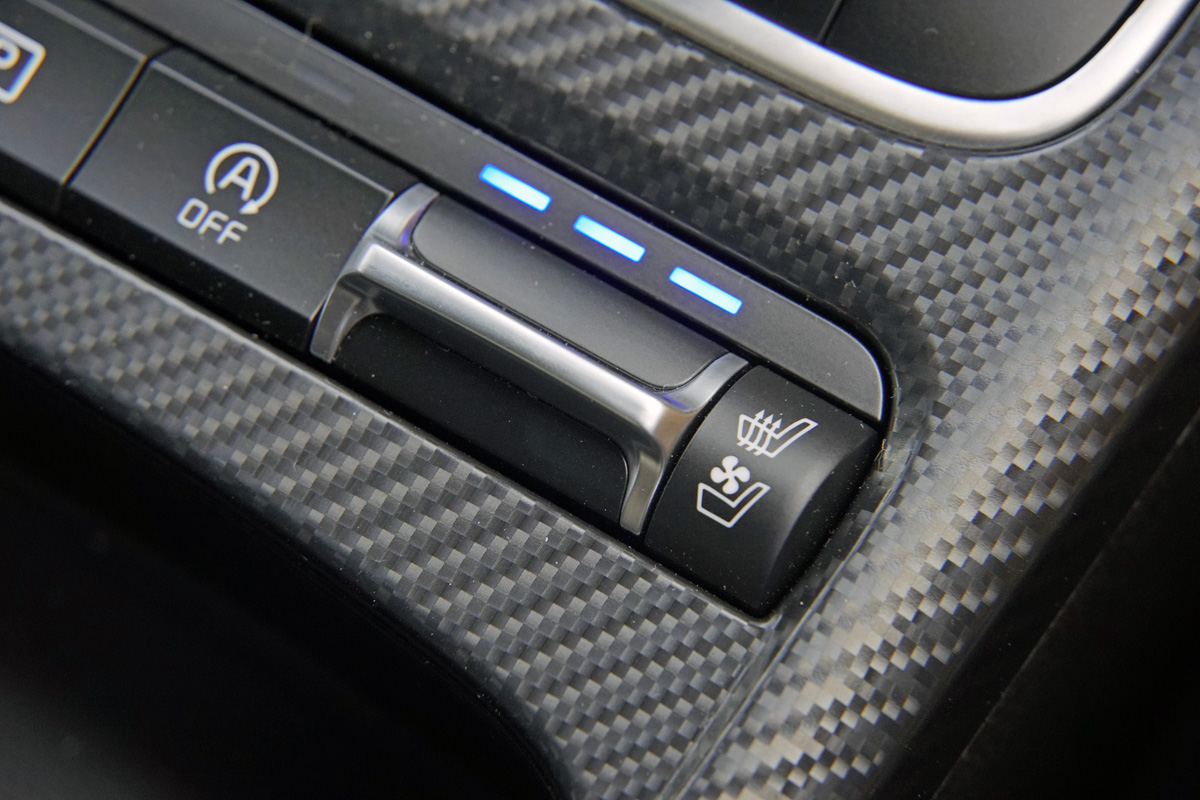
The Stinger still packs a huge list of features, everything from a sunroof to keyless, to a powered tailgate, and even radar cruise control – so much so that it certainly feels like a premium car since almost every convenience is automated for you.
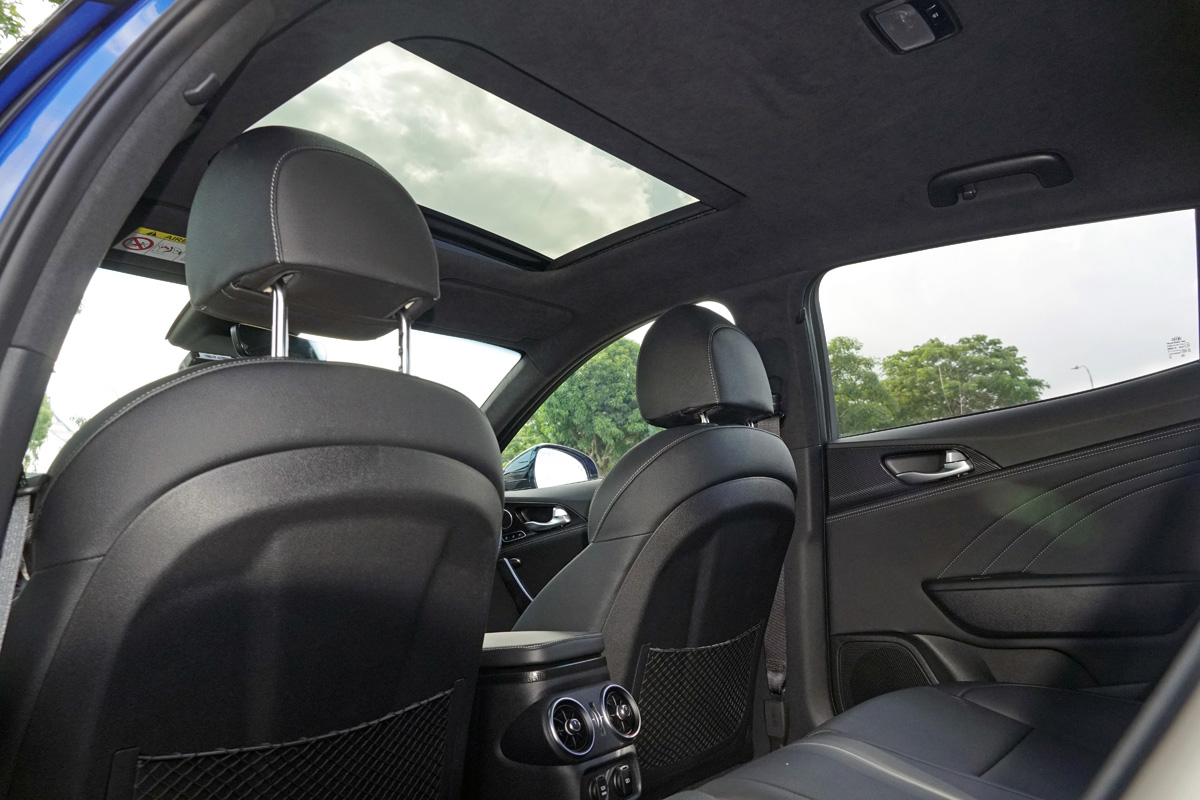
There’s also a full suite of active safety systems, with some new additions: A surround view parking monitor (which is great since the car’s rear windscreen is tiny) and a new blind spot monitor system that shows you a side view of the car when you indicate. Very useful in an era where pandas sometimes behave like lemmings.
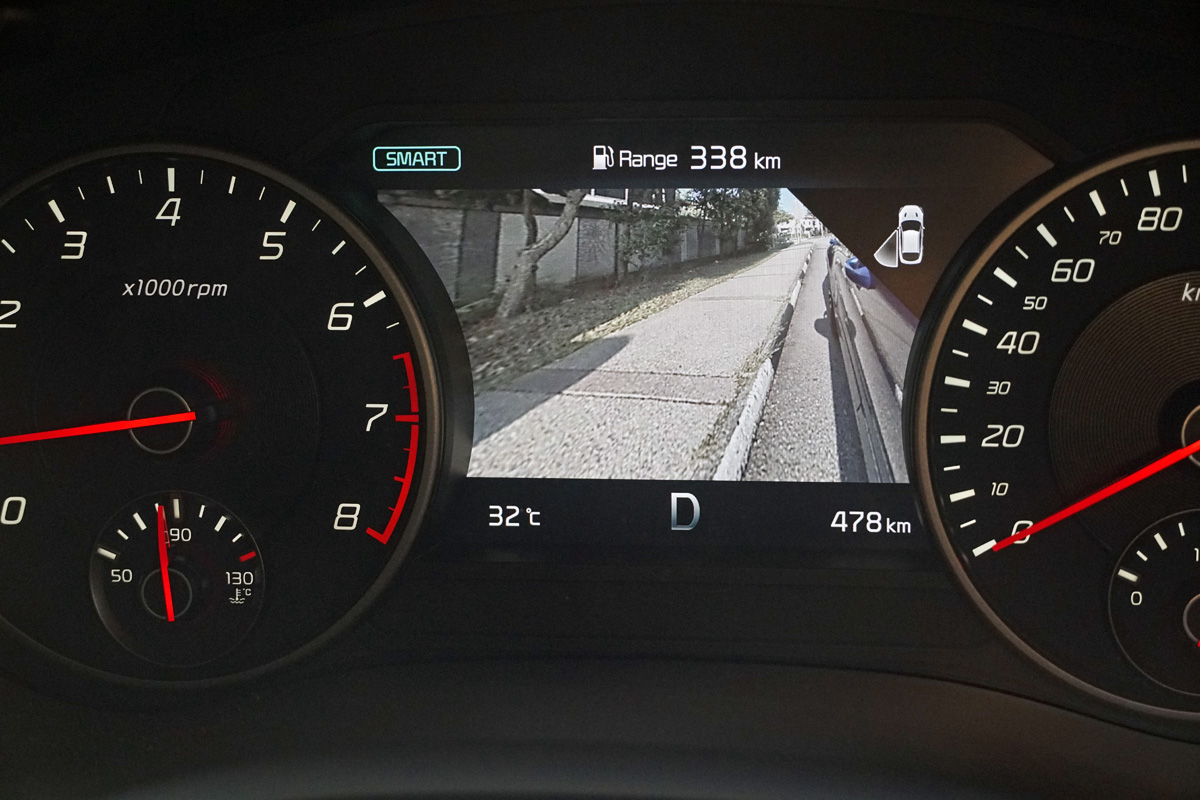 Blind spot monitor literally – you can see who’s lurking at the side when you indicate
Blind spot monitor literally – you can see who’s lurking at the side when you indicate
As before, the Stinger will take four adults in comfort and with good legroom, although the dramatic slope of the roofline cuts into headroom, and leaves 406-litres of cargo space in an easily-accessible though relatively shallow boot area.
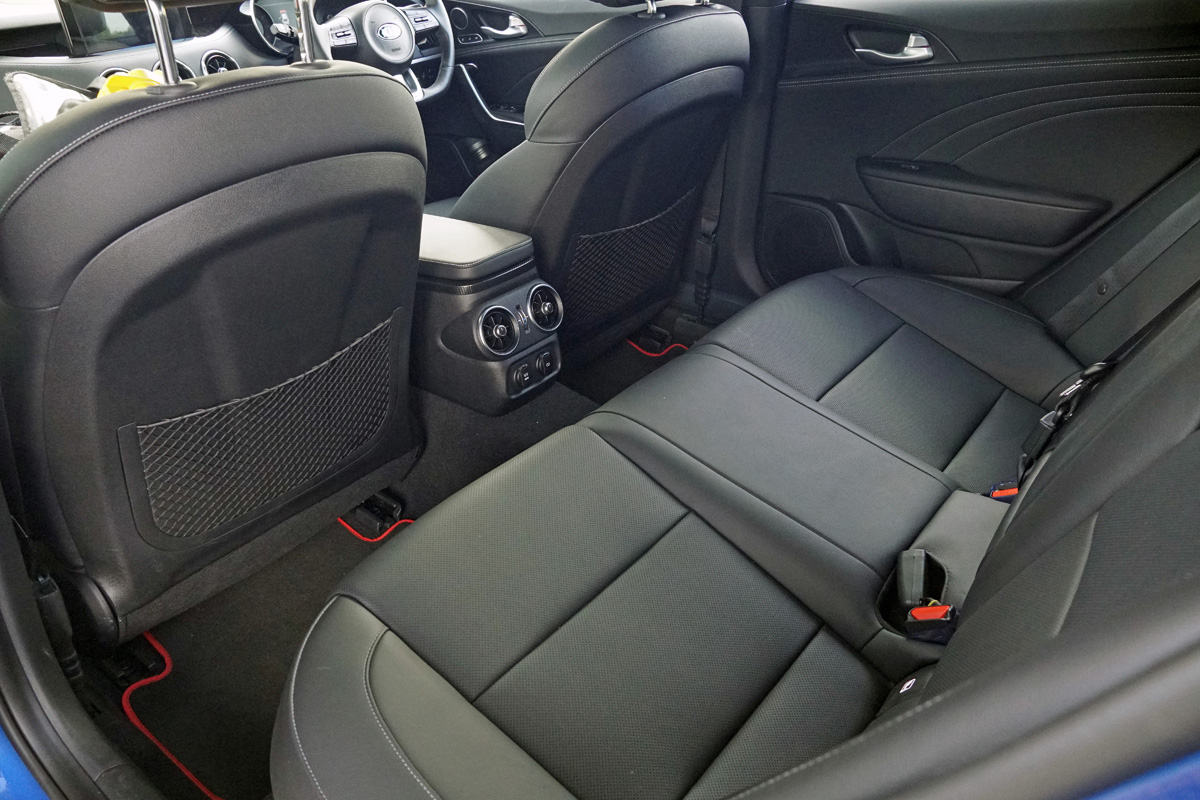
Okay that’s the boring stuff out of the way, how does the Stinger drive?
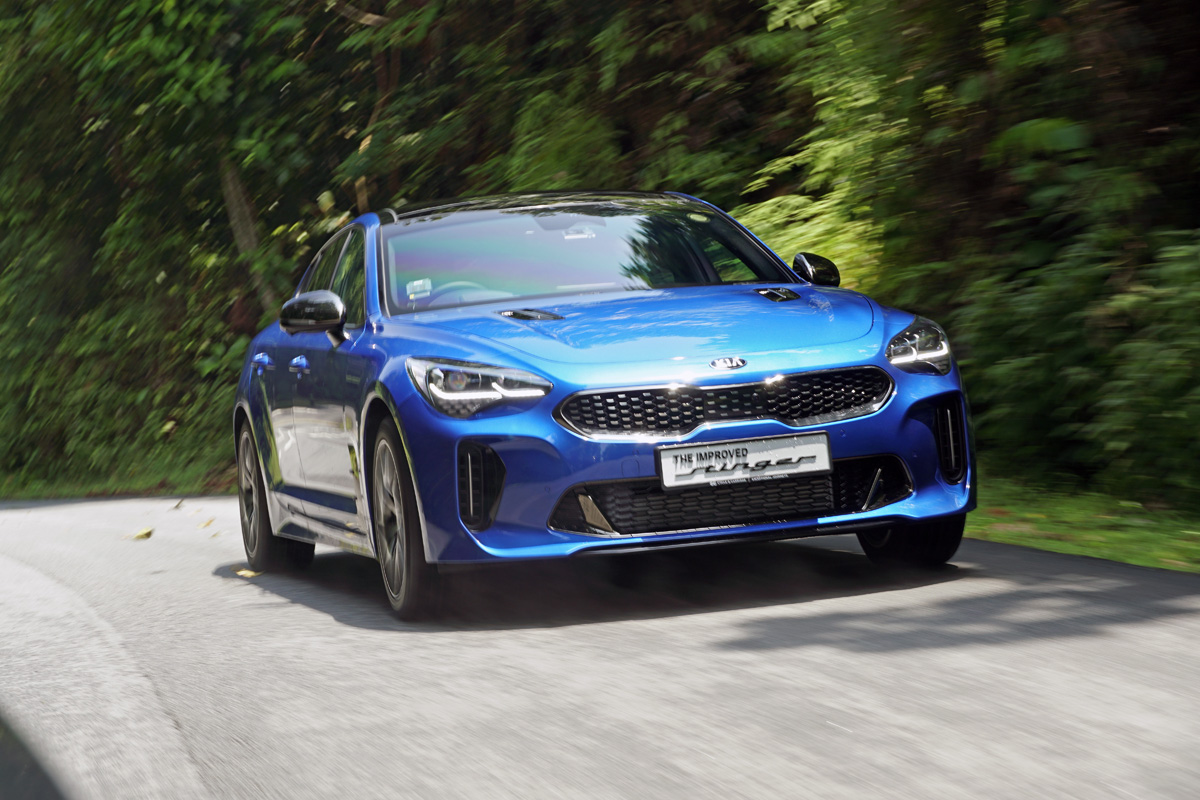
This is the less expensive 2.0-litre turbo model, with the same 244hp sent to an eight-speed auto and on to the rear wheels, but it’s still an excellent drive at almost all speeds.
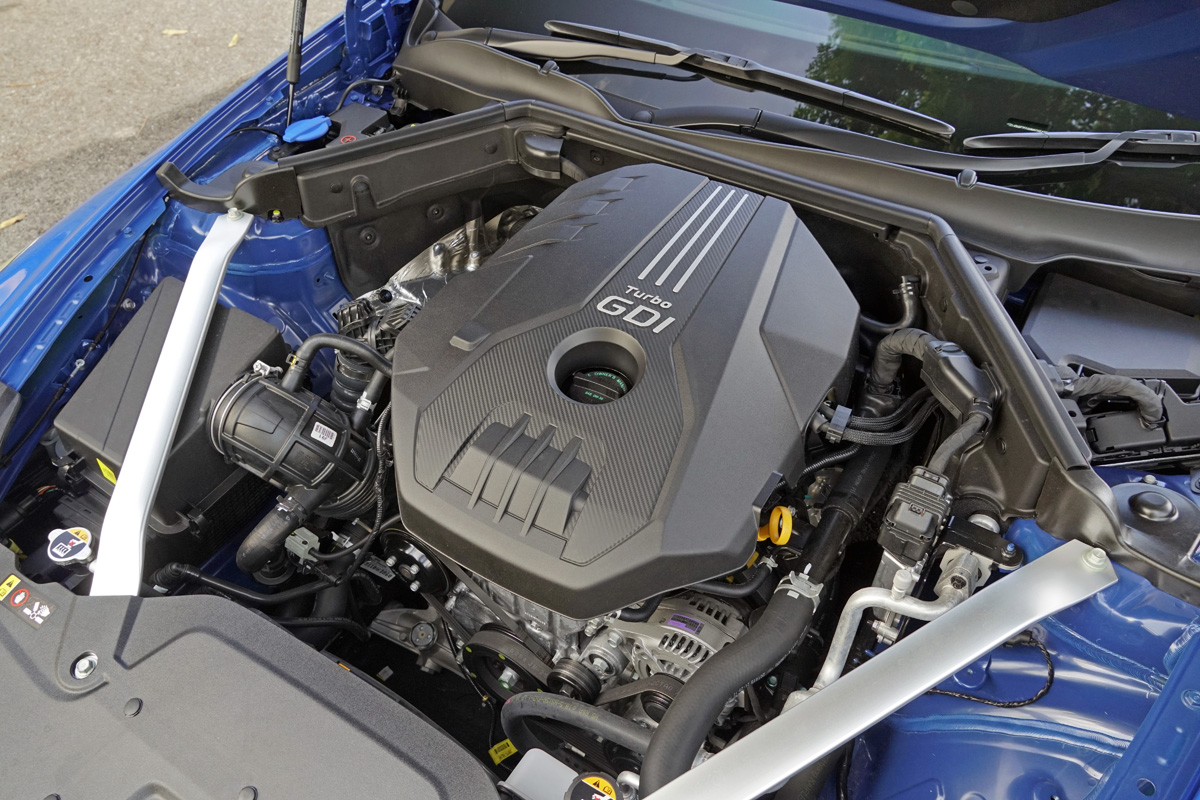
Meaty, involving steering, and a responsive, generous power from the engine paired with excellent fixed-rate suspension setup means it’s not a drag to drive in traffic, but also beautifully responsive when the road becomes clear.
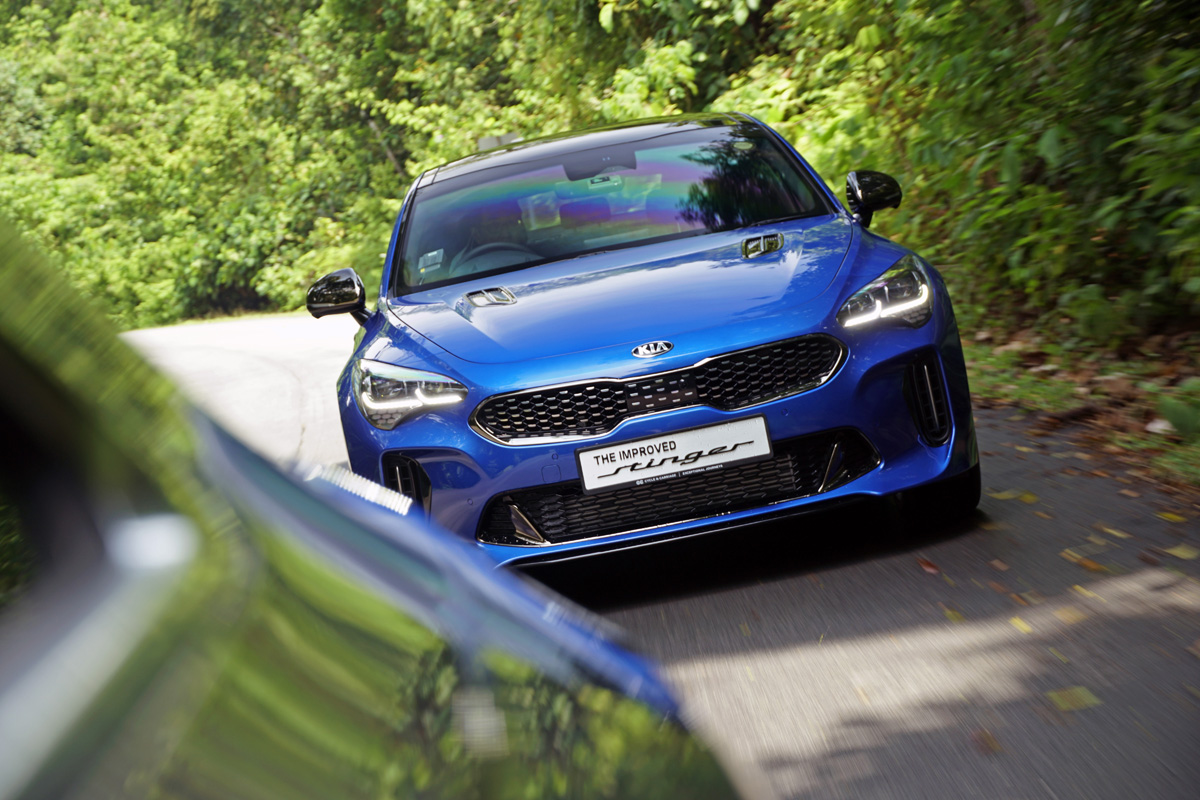 Got a little sting on your tail?
Got a little sting on your tail?
Cornering is very enjoyable because the car’s low stance means it slices through them with ease, and as Ju-Len mentioned in his review of the original, it’s a car that disguises its speed well, a car ‘you can take to Cameron Highlands in a day and play on mountain roads with.’
If there are downsides, it’s that the 2.0 doesn’t sound particularly exciting and it’s still a thirsty car overall. There’s an obnoxious synthetic engine noise which you can set the levels of (or off) and that’s worth a chuckle, but you won’t see south of 9.0L/100km in the Stinger, especially since it’s the sort of car that eggs you on some.
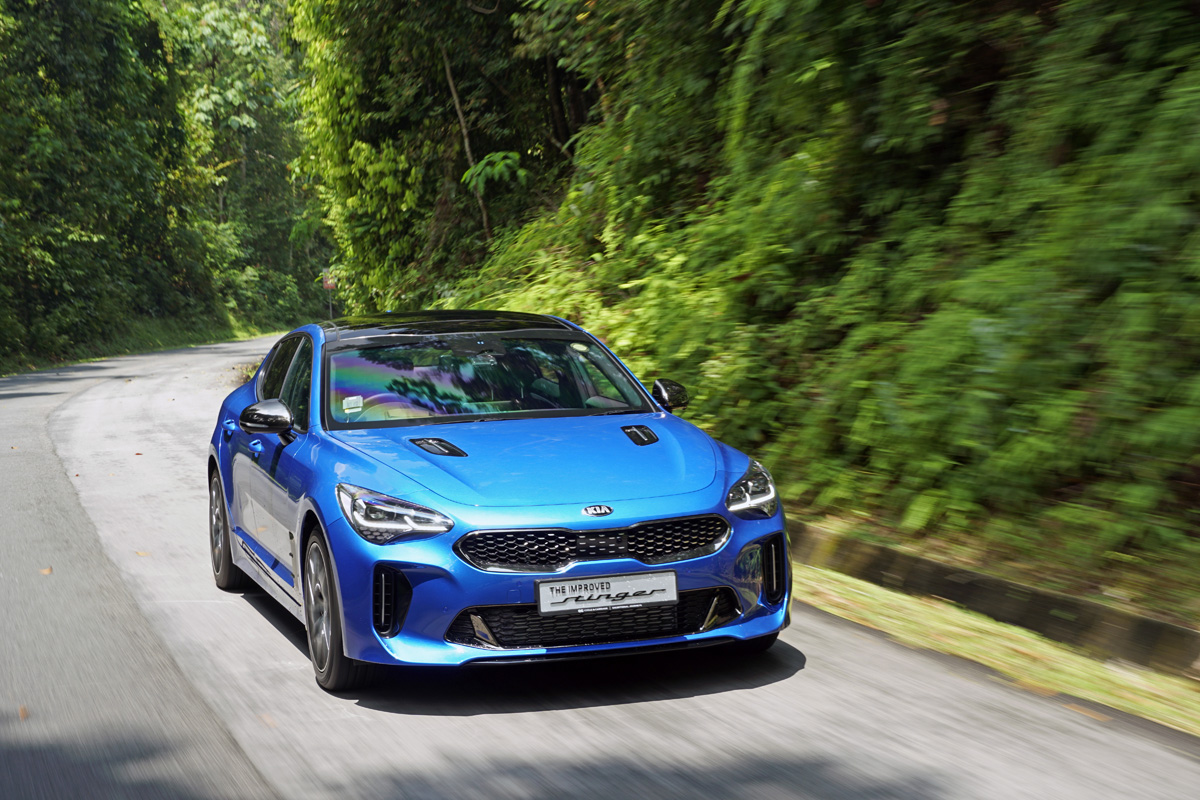
The 3.3 is far worse – or better, from a pure enjoyment perspective. The 2.0 lacks the go-faster bits of the 3.3-litre V6 model (pre facelift review here) such as adaptive suspension, uprated brakes, and a limited slip differential. The facelifted 3.3 has yet to be homologated but we estimate it should cost around S$250k with COE.
Which brings us to an important point: The Stinger 2.0 is quite a bit more expensive now. In 2018 the Stinger 2.0 GT Line was around S$167k., now it’s close to S$200k with COEs are part of the reason since Cat B was S$45k back then, and is around S$52k now, extra carbon tax from VES is another S$5k, and Kia Singapore mentions that the additional equipment on the facelift also add to the cost.
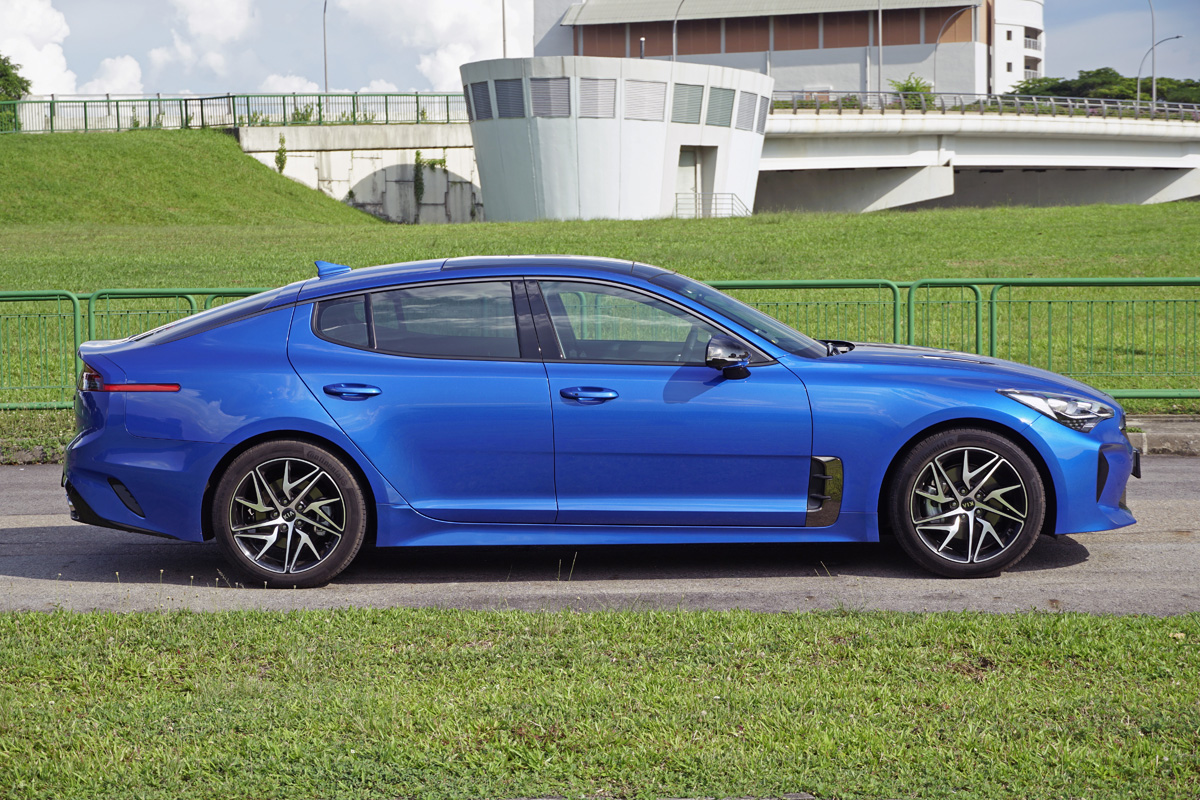
So while it isn’t as much of an outright bargain as it used to be, the Stinger is still a German car in a Korean skin, even if the price level isn’t quite mainstream Korean.
If Volkswagen still sold its Arteon four-door coupe here, that would be the car’s closest non-luxury rival (and still more expensive), but as it stands in real life, the Audi A5 Sportback is smaller, but still the most direct competition the Stinger has. The close-to-S$200k price will net you the regular front-wheel drive 150hp A5 Sportback with more brand recognition, efficiency, and boot space, but quite a bit less performance.
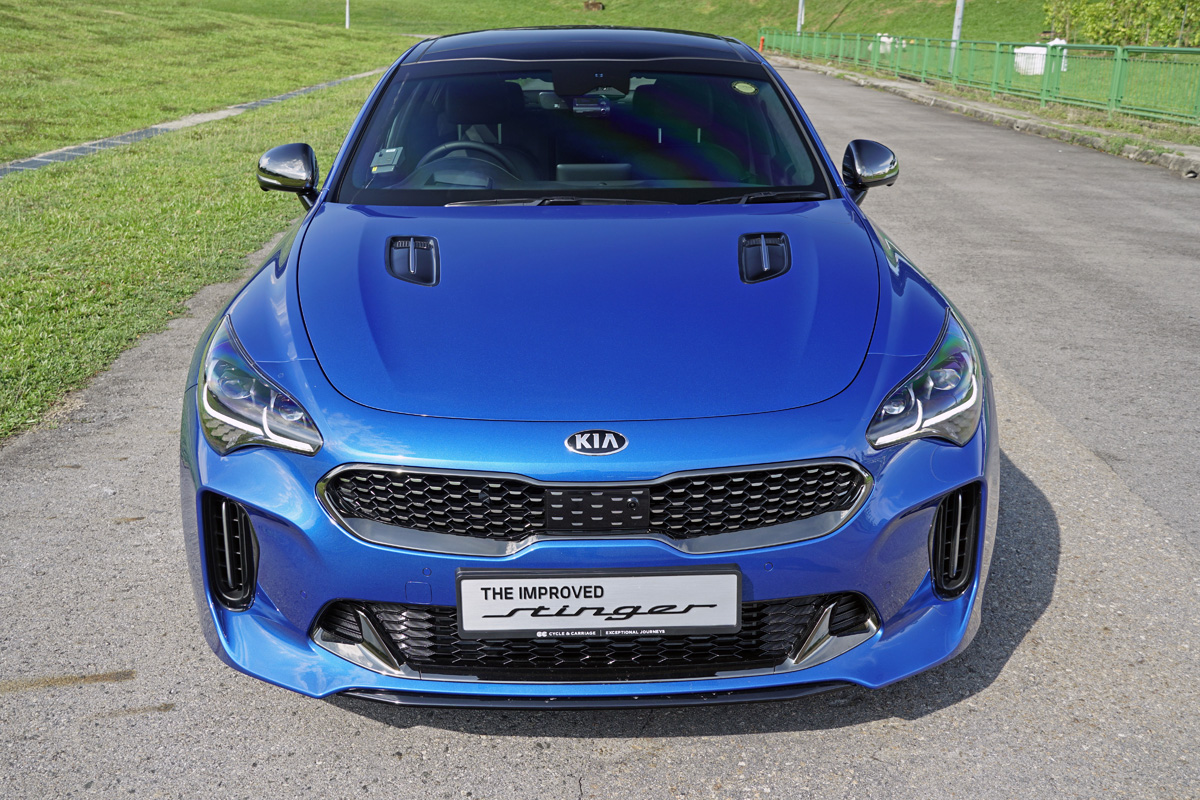
Still, in 2021 the era of hybrids, the dawn of BEVs, and of SUVs gone wild, the Stinger could easily have fallen by the wayside, but it’s surprised us by being a car with its own unabashed character and is perhaps an even stronger statement now.
In its own way, it’s more relevant than ever. If you’re serious about you driving, and badges don’t worry you much, the Stinger is the car for you.
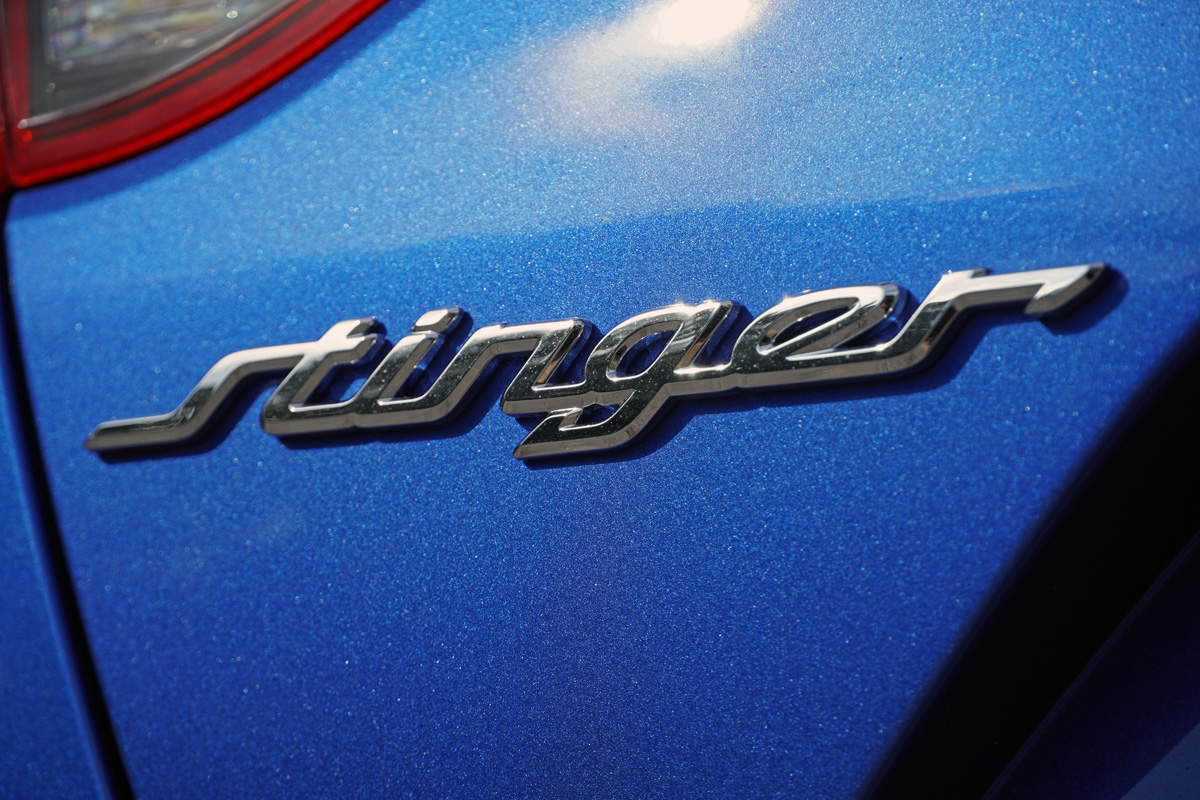
[Source article: carbuyer.com.sg/2021-kia-stinger-2-0-gt-line-review--g-pop]
